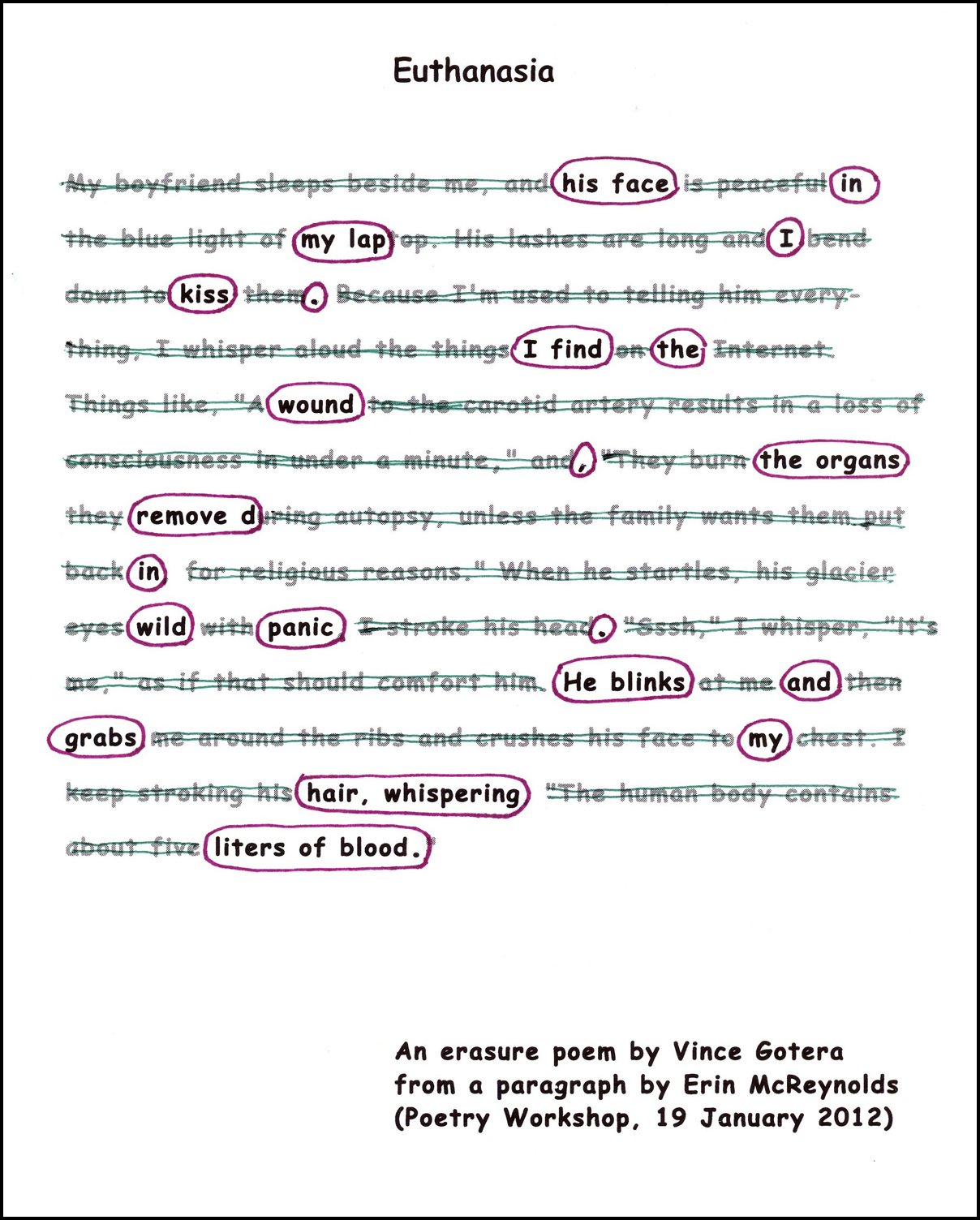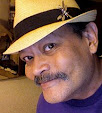Okay, so there was a two-year gap between the previous Dragonfly post and the one before that. And then from that last post to now, a nine-month gap. Has any project ever hung fire so much?
It's been so long, in fact, there may be readers who have never seen a Dragonfly post. To those friends, let me explain: I'm blogging my first poetry collection page by page, or rather, poem by poem with commentary on craft or the circumstances surrounding the composition of the poem, etc. At the bottom of each post, you'll see a little box at bottom right that will help you navigate to the initial Dragonfly post (from late 2008), the table of contents, and so on.
This next poem in the book is thematically related to the previous poem since both deal with gambling.
Uncle Ray Shoots Craps with Elvis
It was Christmas 1963, and my mother's youngest brother, Ray,
was hitting all the tables at Harrah's: blackjack, roulette, craps
and baccarat — the exotic Monte Carlo import into Vegas.
In a trés chic hotel room, stories above the glitter of games,
another man was suiting up in silver lamé and rhinestones — Elvis
Presley, ready for whatever — rock-n-roll's unruly King.
And so they met, two sovereigns, my uncle whose name means king
and the honey-throated emperor of the silver screen. Uncle Ray,
in a white shirt and gray sport coat, sat down across from Elvis
under the dusty yellow light wafting down on the green and red craps
table. The shooter, a platinum blonde who was new to the game,
giggled as she fondled the dice, peeking at Elvis the Pelvis through Vegas
showgirl lashes. Neither the blonde nor Elvis paid the vaguest
attention to my uncle. Elvis ordered glass after glass, first "The King
of Beers," then later Johnnie Walker, Southern Comfort. The game
went on: Platinum giggled and threw, giggled and threw. Uncle Ray
bet with the table, and Elvis bet against. In front of my uncle, a crop
of red and blue chips blossomed and grew. Again and again, Elvis
called for a new stack of chips. The table wavered in front of Elvis's
eyes: was he ready to wager his diamond ring, his sequined vest, his Vegas
Caddy, the keys to the city of Memphis, his entire tobacco and cotton crop
in Tennessee? Who was this little man who dared challenge the King?
Did Elvis squint into the smoky glare, trying to focus on Uncle Ray?
Maybe he looked just like a favorite servant, the grounds- and game-
keeper at the Tennessee farm: Juanito from Cuba, who raised game
cocks and racing greyhounds for the betting pleasure of Elvis
and his retinue. On the other side of the table, Uncle Ray
peered through his own lowered eyelashes at the King of Vegas
and saw a brash young man, cruelly handsome but no King.
Drunk as a skunk, he would later tell us kids. At that craps
|
|
Page 18
table, Elvis was just another foul-mouth holligan. "Crap"
was the gentlest cuss word he said that night. As the game
went on, I noticed a bulge under his coat. It was the king
of handguns, a Colt .45 — the more he lost, the more Elvis
stroked its pearl handle. Then he bet all his chips and the "Vegas
Equalizer," as he called the gun. I thought to myself, This is it, Ray,
do or die. The dice flew. Elvis got up real shaky: he'd crapped
out: "Life's a game," he said. "Now you're King." "Just call me Ray,"
I told him. Then he and the blonde staggered out into the streets of Vegas.
|
|
Page 19
This is based on a true story. Though I've made up everything. My cousin Monica (Uncle Ray's daughter) once told me at a family gathering, "Hey, did I ever tell you how my dad shot craps with Elvis?" I said something like, "Nicky, don't tell me another thing. I want to write about it without knowing the details."
This poem may also be connected to my MFA professor David Wojahn's assignment to write a poem in which a family member meets a celebrity. I didn't write this until several years after I was David's student, but there it is. Some of you may know of that famous Wojahn assignment, which has been published here and there.
What else can I say? It's a sestina. Google that word or click on the word "sestina" in the labels below. I wrote a decent blog post on the sestina in March 2009.
Let's see . . . that picture of Elvis above is from a Sun Records promotional photo when he was 19. I tried to find an image of Presley that's not well known. I borrowed it from Wikipedia; click on it for more info. The picture's in the public domain.
There's a small anecdote connected to this poem for me. I was a visiting writer at the William Joiner Center for the Study of War and Social Consequences, at UMass Boston during the '90s, and I performed this poem, among others, at a reading. During the Q&A, a well-known scholar and historian of the Vietnam war called me out for sexism, citing the portrayal of the character of the showgirl as evidence. I felt bad about that for quite a long while, but really, if one were to write from the point of view of a mass murderer, does that make one a mass murderer? The showgirl is, admittedly, a static, undeveloped character who is shown only as silly arm candy for Elvis. But her purpose in the poem, as an image, as a device, is to characterize Elvis's womanizing and to oppose his character to that of Uncle Ray. I'd love to hear some thoughts about this question, if you wouldn't mind posting a comment about it below.
Oh, one other thing, the phrase "cruelly handsome" above was originally "brutally handsome" in the book. I think, though, that I unconsciously lifted that from the Eagles. Hence the alteration.
Okay, that's all for now. Comment below, won't you? About anything, please. Thanks. Ingat.
Added 5/8/2012: Yesterday, I mentioned that the Wojahn assignment had been published. Here's the scoop: "The Night Aunt Dottie Caught Elvis's Handerchief When He Tossed It from the Stage of the Sands in Vegas," a poetry-writing exercise by David Wojahn, from The Practice of Poetry: Writing Exercises From Poets Who Teach, edited by Robin Behn and Chase Twichell. Lots of great exercises in this book . . . worth picking up.
|





















